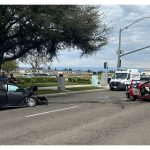How to Handle a Hit-and-Run Auto Accident Claim
Being involved in any car accident can be overwhelming, but a hit-and-run crash adds a whole new layer of stress and uncertainty. Whether you were hit while parked or during active traffic, not knowing who the at-fault driver is can complicate your insurance claim and your recovery. If you’re wondering how to handle a hit-and-run auto accident claim, understanding the right steps to take can make all the difference in protecting your rights and securing compensation.
What Is a Hit-and-Run Accident?
A hit-and-run accident occurs when a driver causes a collision and leaves the scene without stopping to provide contact or insurance information, or without offering help if someone is injured. These incidents are not only reckless—they’re also illegal in most states.
Step 1: Call the Police Immediately
As soon as the accident occurs, contact the local police. Filing a police report is essential for documenting the event and is often required by your insurance company. Provide as many details as you can about the other vehicle or driver—even partial information like make, model, color, or a portion of the license plate number can help investigators.
Step 2: Gather Evidence at the Scene
If you’re physically able, take photos and videos of the damage to your vehicle, the surrounding area, and any debris or skid marks. Speak to witnesses and gather their contact information. Surveillance cameras from nearby businesses or homes may have captured the event, so take note of any possible sources of footage.
Step 3: Notify Your Insurance Company
Report the incident to your insurance provider as soon as possible. If the hit-and-run driver isn’t found, your uninsured motorist coverage—if you have it—will typically cover damages and medical expenses. Be sure to understand what your policy includes and ask about deductibles and coverage limits.
Step 4: Get Medical Attention
Even if you feel fine immediately after the accident, it’s smart to get checked out by a healthcare provider. Injuries like whiplash, internal bleeding, or concussions may not show symptoms right away. Medical documentation will also support your injury claim if one becomes necessary.
Step 5: Consult a Personal Injury Attorney
Because hit-and-run claims can get complicated—especially if the driver is never identified—consulting with an experienced personal injury lawyer is highly recommended. An attorney can help you navigate the insurance process, negotiate on your behalf, and explore all possible compensation avenues, including filing a lawsuit if the hit-and-run driver is later found.
Conclusion
Dealing with a hit-and-run accident is never easy, but knowing how to handle a hit-and-run auto accident claim can protect your rights and increase your chances of a favorable outcome. If you’ve recently been involved in such an incident, don’t go through the process alone.
Contact Pipas Law Group PA today for a free consultation and let our experienced team guide you through your hit-and-run accident claim, from start to finish. We’re here to fight for the justice and compensation you deserve.
This post was written by a professional at Pipas Law Group. Pipas Law Group is a Personal Injury and Civil Litigation Law Firm in Downtown St. Petersburg and Downtown Tampa. Our Personal Injury attorneys specialize in car accidents, slip and falls, medical malpractice, dog bites, motorcycle accidents, and more. At Pipas Law Group, you will always speak with and work with the attorney on your case, not a case manager or paralegal. We take the very best care of our clients as possible, because that is what we would want for our families.







